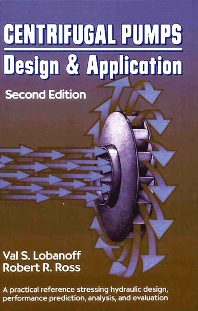Books in Engineering and technology
Books in Engineering and technology
The Engineering and Technology portfolio includes comprehensive overviews of all major research and practical developments in aerospace and automotive engineering, civil and environmental engineering, mechanical and industrial engineering, materials engineering, electrical engineering, communications engineering, and more. In-depth coverage, innovative state-of-the-art approaches, and real-world case studies provide valuable, actionable insights for researchers, applied engineers and students. The content in Elsevier's Engineering and Technology books program addresses core issues in industry and society, such as sustainability, the circular economy, AI, and automation.
- 1st Edition
- Volume 68
- June 25, 1992
- J. Feda
- English
- Paperback9 7 8 0 4 4 4 5 6 6 1 9 5
- eBook9 7 8 0 4 4 4 5 9 9 6 0 5

Creep of Soils
- 1st Edition
- June 3, 1992
- Joseph A. Castellano
- English
- Hardback9 7 8 0 1 2 1 6 3 4 2 0 9
- eBook9 7 8 0 0 8 0 9 1 7 2 4 5

Handbook of Display Technology
- 2nd Edition
- May 21, 1992
- Val S. Lobanoff + 1 more
- English
- Hardback9 7 8 0 8 7 2 0 1 2 0 0 4
- Paperback9 7 8 1 4 9 3 3 0 3 4 5 8
- eBook9 7 8 0 0 8 0 5 0 0 8 5 0

Centrifugal Pumps
- 1st Edition
- May 7, 1992
- G.C. van der Veer + 2 more
- English
- Hardback9 7 8 0 4 4 4 8 9 5 0 4 2
- eBook9 7 8 0 0 8 0 9 3 4 3 5 8

Cognitive Ergonomics
- 1st Edition
- May 7, 1992
- William Glaeser
- English
- Paperback9 7 8 0 4 4 4 5 5 5 6 4 9
- eBook9 7 8 0 0 8 0 8 7 5 8 4 2

Materials for Tribology
- 1st Edition
- April 27, 1992
- C. A. Silebi + 1 more
- English
- Hardback9 7 8 0 1 2 6 4 3 4 2 0 0
- Paperback9 7 8 0 1 2 4 1 2 0 0 9 9
- eBook9 7 8 0 0 8 0 9 2 5 8 2 0

Dynamic Modeling of Transport Process Systems
- 1st Edition
- April 27, 1992
- Linda Shapiro
- English
- Paperback9 7 8 0 1 2 4 1 2 2 4 3 7
- eBook9 7 8 0 3 2 3 1 4 1 5 6 7

Computer Vision and Image Processing
- 2nd Edition
- Volume 71
- April 13, 1992
- M. Klesnil + 1 more
- English
- Hardback9 7 8 0 4 4 4 9 8 7 2 3 5
- eBook9 7 8 0 0 8 0 9 3 4 6 0 0

Fatigue of Metallic Materials
- 1st Edition
- April 7, 1992
- Norman Goldberg
- English
- Paperback9 7 8 0 1 2 4 1 2 0 3 7 2
- Hardback9 7 8 0 1 2 2 8 7 5 7 0 0
- eBook9 7 8 0 0 8 0 5 0 0 6 6 9

Camera Technology
- 1st Edition
- March 25, 1992
- J. Piotrowski
- English
- Paperback9 7 8 0 4 4 4 5 6 5 3 2 7
- eBook9 7 8 0 4 4 4 5 9 8 3 3 2

Theory of Physical and Technical Measurement